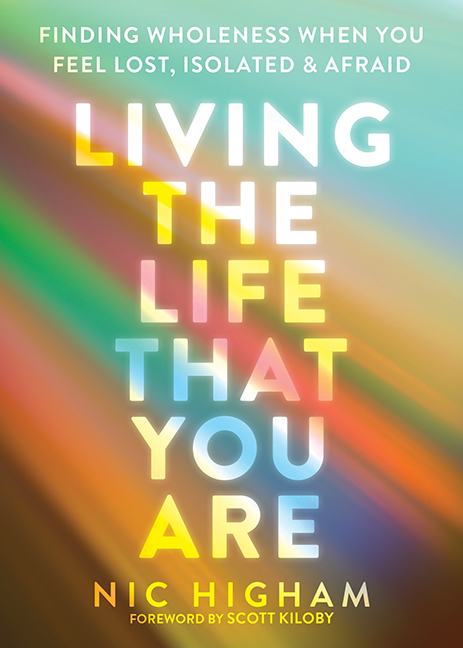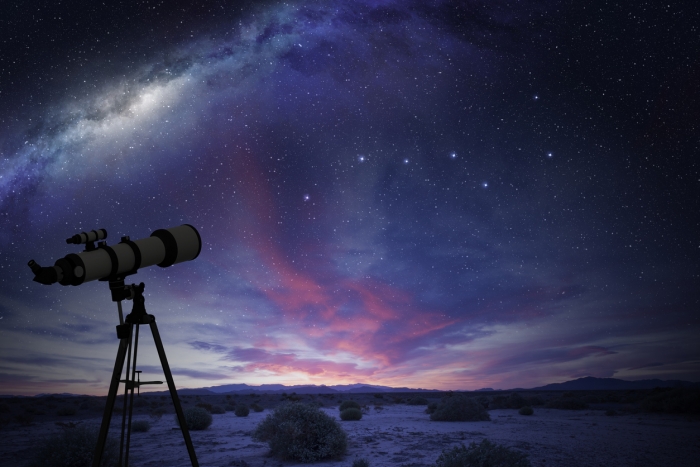By Nic Higham, author of Living the Life That You Are
You exist. I don’t need to tell you that, do I? After all, your existence—your consciousness, aliveness, beingness, presence, I-am-ness—is the most intimate context in which your life flows. Yet so often, the transient content within our beingness obscures the gorgeous simplicity of our timeless being. This self-forgetful habit creates a restless inadvertence that projects a world of separateness, and therefore we experience desire and fear. According to the ancient message of non-duality, this false perception of existence is the root of our suffering.
The solution? Self-remembrance: being attentive to, clarifying, and using our consciousness as a portal to our supreme non-dual self. These themes comprise a “natural yoga” that’s incredibly accessible. Yoga is often translated as “union with the divine.” While in the West we tend to focus mostly on the physical aspect of the system, I won’t be focusing on that here. Our natural state, or awareness, and the way to reunite with it are brilliantly explained in my favorite spiritual book, I Am That by Sri Nisargadatta Maharaj. Nisargadatta’s Natural Yoga (or Nisarga Yoga) are seven powerful keys to spiritual practice. I hope they bring clarity to your own spiritual journey.
-
Non-Identification and Right Understanding
Nisargadatta taught an age-old, clear-cut way of freedom through understanding (or jnana, meaning “knowledge”) that uses the mind as a tool to investigate the manifested. This brings about a deep non-intellectual “knowing,” or recognition of the timeless awareness that we are beneath conditionality. It’s a gentle revolt against every identity that makes us feel small and limited.
Ask yourself: “Is there any identity that isn’t, on some level, restrictive?” “Am I more than my roles and self-concepts?” Don’t get me wrong—there’s nothing wrong with identity, as it is one means for life to express itself. I’m merely inviting you to create some space and healthy detachment. Imagine wearing your identities like clothes. Loosen them. Unbutton a few constrictions. If you have the courage, stand naked in pure awareness!
-
Interest and Earnestness
A big part of suffering is our excessive interest in the impermanent forms of life. This leads to false self-identification, which creates yet more suffering. Whatever we’re consumed by seemingly (but not actually) leaves us feeling deficient, fearful, and insatiable. The effort to understand the most profound truth of life and ourselves is what yoga is all about.
You’re reading these words because you’re interested in what I’m sharing, and you’re interested because something within you resonates with what you’re reading. Even if what you’re reading seems a little unclear right now, I know you have enough earnestness to keep searching for what your heart desires most dearly: wholeness. Being clear about uncertainty is a leap toward becoming free of uncertainty.
-
Spontaneity and Effortlessness
When you become really quiet and receptive, you might notice the spontaneity of your body-mind’s movements, sensory energies, patterns of thought, and waves of emotion. You live in spontaneous awareness and waking up this fact releases you from the unnecessary burden of effort and interference.
When out walking somewhere, have you ever followed your feet while being curious about where they might lead? Even if you think you know the destination, your feet take care of each step all by themselves. Try it!
-
Attentiveness to Being
You still exist. You are here and you are now. You are never not here and now. And right now, you can be present with your presence, conscious of your consciousness, and witness your witnessing. You can wonder what it is that is aware of your beingness. You’ll continue to be just perfectly, even when the doing gets done effortlessly. But here’s the thing: you can’t do being. You can, however, give your attention to your being, and this is the heart of Nisarga Yoga.
Nisargadatta invited people to delve into the ever-present sense of “I.” By flowing with the river of our I-am-ness, we are guided back to our boundless source and can—once and for all—find lasting happiness within. “Establish yourself firmly in the awareness of I am,” Nisargadatta urged his disciples. “This is the beginning and also the end of all endeavour.”
-
Right Action
Our greatest challenge, at least on the experiential human level, is to live, behave, think, feel, and act in harmony with reality instead of our sense of a separate, desire- and fear-driven self (which is ego). Nisargadatta emphasizes the importance of harmlessness. Fear and desire result in the wrong use of the mind. The right use of mind, and therefore the body, is in the service of peace, harmony, friendliness, love, and truth. Harmlessness is a potent form of yoga, and it starts with treating ourselves with compassion and understanding. We cannot give to others what we don’t first give to ourselves.
There’s a lot of talk in mindfulness circles nowadays about “accepting the present moment” and “going with the flow.” The message of non-duality goes further and says that we are both the deep acceptance of, and the very isness, of this eternal moment. Despite the mind’s habitual resistance, we are the very flow of life and therefore are always in complete alignment with what is. It’s all a matter of focus and self-remembrance.
6. Going Within to Go Beyond
The mind is an awesome tool that is crucial for human existence. But having spent a lot of my life perceiving life through the mind, at some point I recognized that it has limitations and couldn’t define me. I also realized that it was futile to depend on my mind for liberation. After all, thought cannot think beyond itself!
We are blessed with ancient tried-and-tested practices such as meditation and inquiry, which make good use of the mind. With them, I’ve developed a bittersweet fondness for identifying, watching, and investigating the inconsistencies, incongruities, untruths, and the existential angst of the human condition—as well as the cavernous desire for transcendence. I invite you to also explore these themes. In doing so, you might recognise that you are not only part of the solution, but the solution itself. Go within to welcome and befriend your consciousness, and let it take you by the hand to guide you toward the sacred ground you’ve never left.
-
Awareness of Self
The appearance of duality is separateness. It persists and compels us only as long as we put off questioning it. Yoga is ultimately the purification and cessation of the restless, limiting mind. Just as our minds can only comprehend the limited, we can only be the unlimited. Nisargadatta says, “Abandon false ideas, that is all. There is no need of true ideas. There aren't any.” We can’t learn how to be what we already are. But we can give the same attention that we give to our small selves (in its many guises), to our true self: boundless awareness.
We can broaden our scope by guiding the observation of our concepts to systematically and wisely see through them. Doing this can dissolve the “fixed” roles we’ve attributed to ourselves and others, allowing us to appreciate the unity of life. In my book, I talk about mindful negation:
Ask yourself if your self-beliefs can capture your fullness. Are you limited to your self-definitions, or are they just finite expressions of your infinity? For example, “Am I male?” No, this label doesn’t capture all that I am. “Am I my age?” No, that’s just a number. “Am I my name?” No, that was given to me. “Am I this body?” No, my consciousness seems to transcend this flesh and these bones. “Do I have a consciousness?” No, not even consciousness defines me; it’s just a word with associated mental imagery. “From whence does consciousness emerge?” I don’t know, and that not-knowing feels liberating. “Where does the real me reside?” Here, there, everywhere, and nowhere.
Contemplate this as you exist here, there, everywhere, and nowhere.
 Nic Higham is a certified counselor, life coach, and a practitioner of neurolinguistic programming and Ericksonian hypnosis. He has over ten years of experience working for the National Health Service (NHS) in mental health inpatient care and a therapeutic community. For a number of years, he has been actively involved in communicating the message of non-duality through organizing seminars, producing popular podcasts, blogging, and managing social networking platforms. Higham is a mindfulness tutor at a recovery college, where he teaches people with emotional and mental problems, as well as health care professionals. He lives in Leicestershire, UK. His website is: www.thelifethatyouare.com.
Nic Higham is a certified counselor, life coach, and a practitioner of neurolinguistic programming and Ericksonian hypnosis. He has over ten years of experience working for the National Health Service (NHS) in mental health inpatient care and a therapeutic community. For a number of years, he has been actively involved in communicating the message of non-duality through organizing seminars, producing popular podcasts, blogging, and managing social networking platforms. Higham is a mindfulness tutor at a recovery college, where he teaches people with emotional and mental problems, as well as health care professionals. He lives in Leicestershire, UK. His website is: www.thelifethatyouare.com.


 2024 Peace Playbook: 3 Tactics to Avoid Clashes with Your Partner
2024 Peace Playbook: 3 Tactics to Avoid Clashes with Your Partner